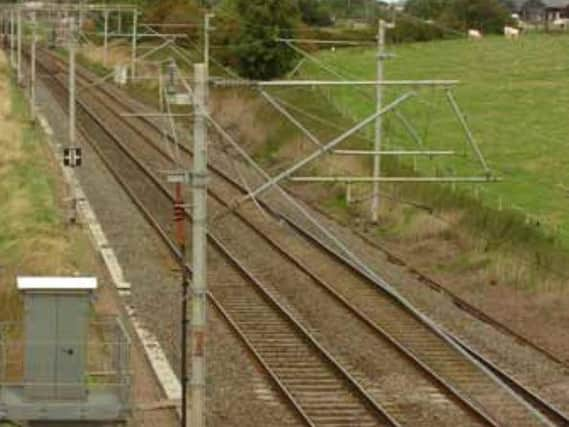Kilsby Tunnel is being repaired but imagine the problems engineers faced in 1833, building the first rail line to cross Northamptonshire


Ashby St Ledgers is one of my very favourite places in Northamptonshire.
After looking around the village recently, I did what I used to do on my bike.
Advertisement
Hide AdAdvertisement
Hide AdNow in a car, I drove down the lane beside the grounds of the magnificent Manor House that leads back to the A5; I wanted to look once more at the gaping mouth of Robert Stephenson’s great railway tunnel.
As a lad, I used to cycle there, dump my bike on the grass and perch on the bank of the cutting to watch the trains and thrill as they burst from the black cavern like a bat out of hell, leaving billows of smelly, disgusting, but wonderful smoke!
Imagine my disappointment when I found the area has been fenced off.
Of course, I could understand why, but yet another of my memories had been dashed.
Advertisement
Hide AdAdvertisement
Hide AdIn 1833, the great George Stephenson’s son, Robert, was appointed chief engineer of the first line to cross Northamptonshire.
Little did he know what problems would face him.
First came opposition from landowners, who did all they could to frustrate the scheme.
In Northampton, it was a different matter.
The town needed a line and a station because it was an increasingly important industrial centre.
The reason the line avoided Northampton, however, had nothing to do with landowners; it was the difference in land levels and the capacity for early locomotives to cope with steep inclines that caused the trouble.
So, the line was built away from the town.
Advertisement
Hide AdAdvertisement
Hide AdThe next major problem came when Stephenson had to negotiate the high ground at Kilsby.
The answer was a tunnel, but he was faced with a sticky natural challenge, quicksands!
He considered abandoning the Kilsby project.
In the end, over a period of eight months, at great cost and on advice from his father, he pumped water out at a rate of 2,000 gallons a minute.
Over 1,250 ‘navvies’ set up a camp of tents and mud huts near the tunnel site.
Advertisement
Hide AdAdvertisement
Hide AdSoon after starting on the project the roof of the tunnel collapsed and a deluge of water burst in.
The men working on this part of the tunnel were only saved from drowning by being towed on a raft by an engineer swimming with the rope in his mouth.
Following this collapse, Stephenson had to cope with rioting navvies too! Troops from Weedon Barracks had to be brought in to calm them down.
Geologically, Stephenson could not have chosen a more significantly awkward place to build his tunnel.
Advertisement
Hide AdAdvertisement
Hide AdThe limestone ridge at Kilsby is a watershed at which water drains westward into the Severn system and eastward into the North Sea.
The project took nearly two years to complete and it was no surprise that it overran its budget of £99,000, eventually costing over three times that sum.
The 2,426 yard-long Kilsby Tunnel was on the old London and Birmingham Railway, later the LNWR and LMSR, now the West Coast Main Line.
When it was built between 1834 and 1838, it was by far Britain’s longest tunnel for steam locomotives.